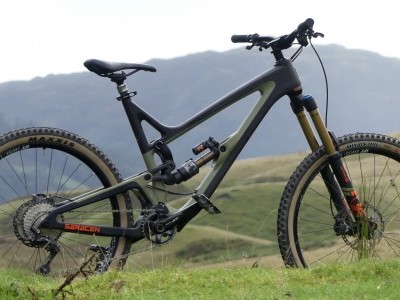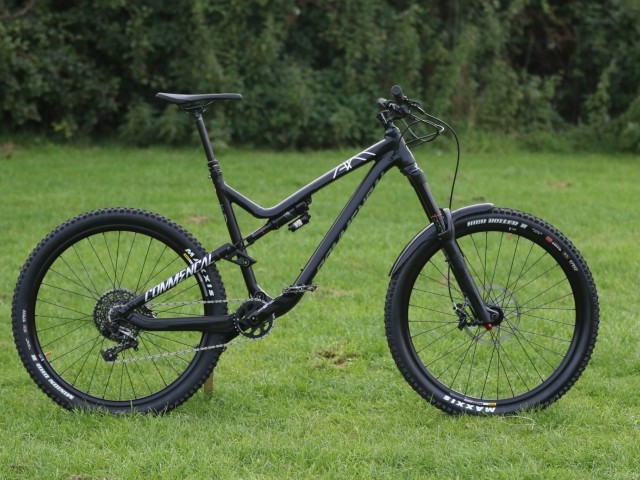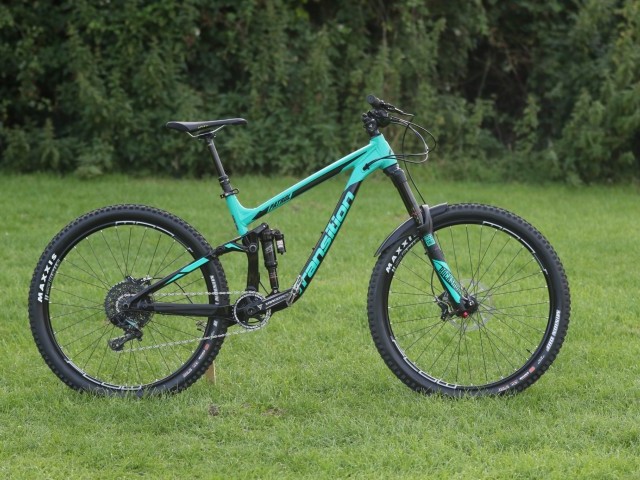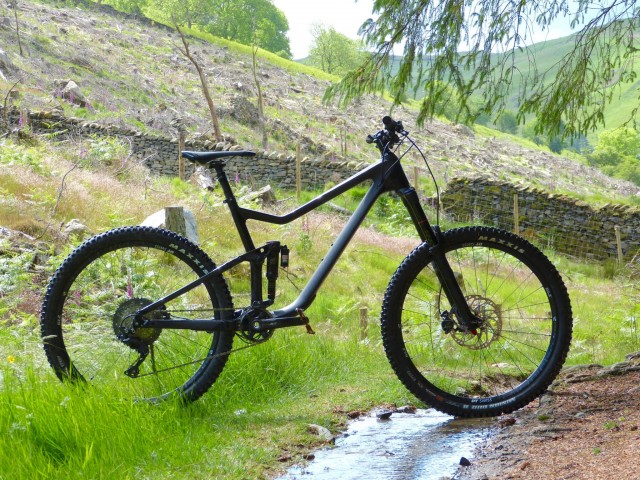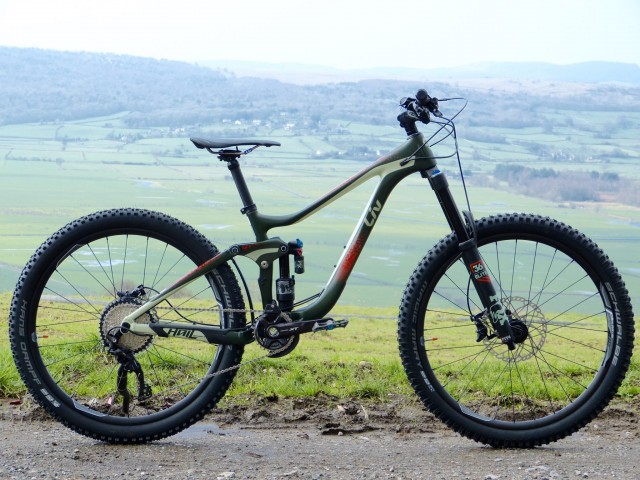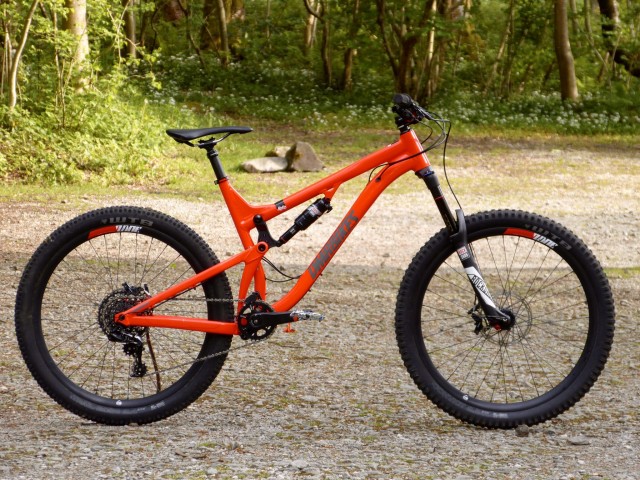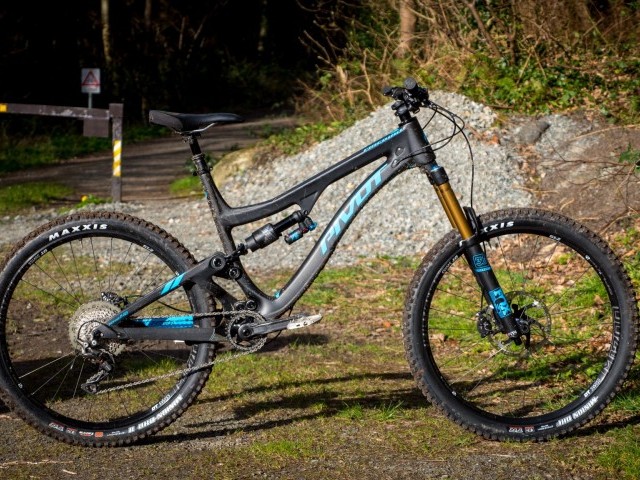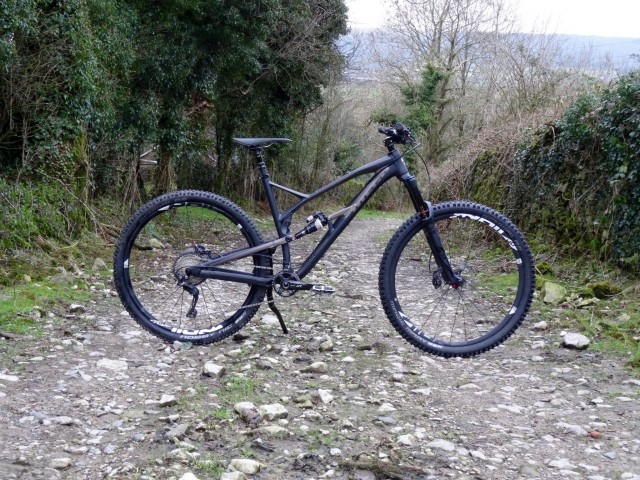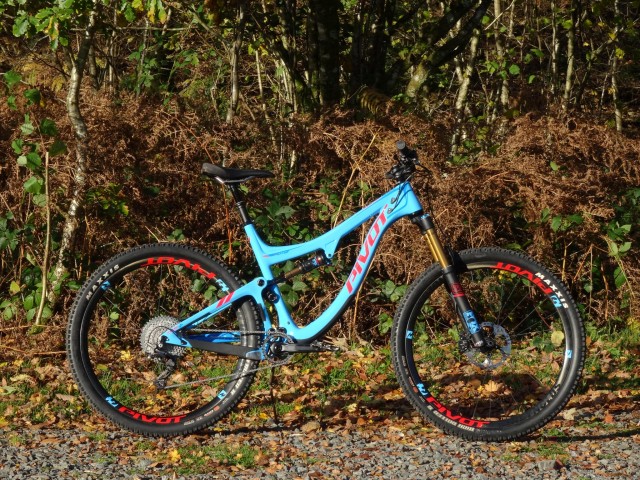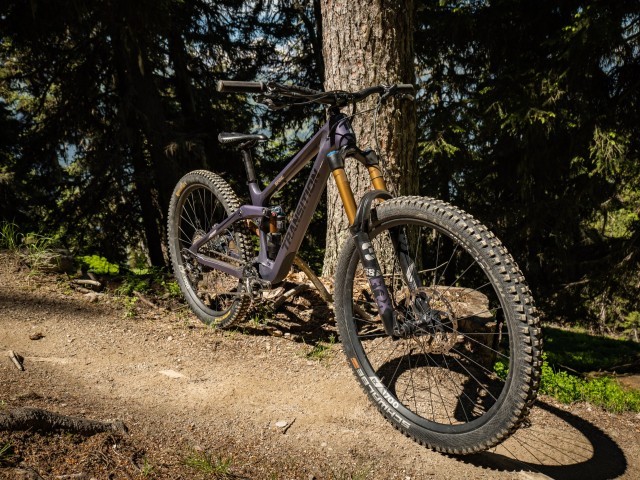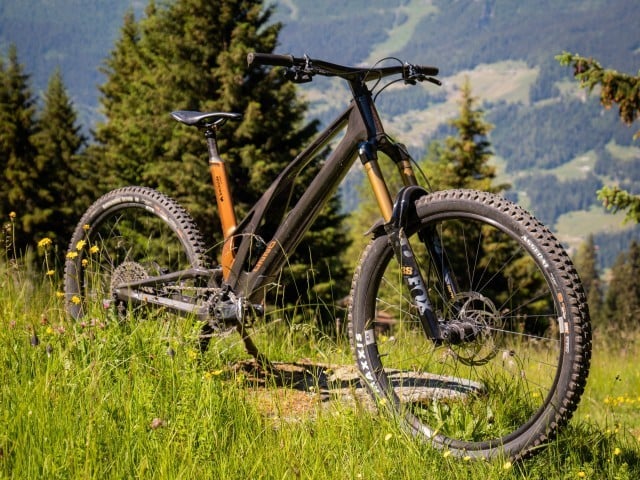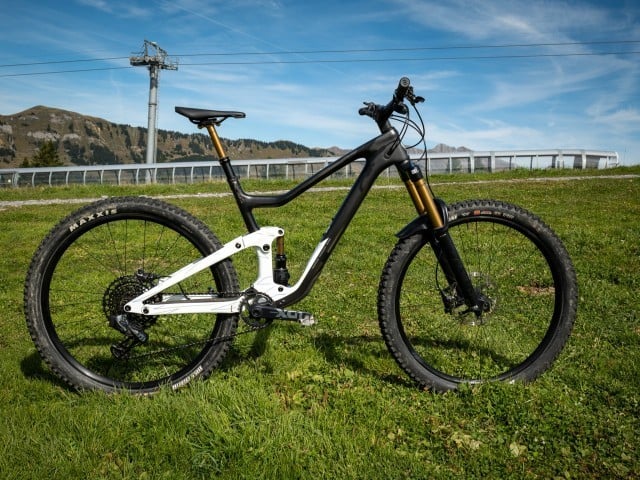At A Glance
British brand Saracen is back with a bang, though for those in the know they never really went away. One of the original brands from the early days of mountain bikes, those riders of a certain age will have an understanding of where Saracen have come from. Their story to this point has not been straightforward, with the brand going through various changes of direction. For some time now the brand has been stabilised by Madison, and with a strong downhill team, and a willingness to shout about their bikes, Sacaren are visible again.
Buy Enduro Bikes on
Here we have the main event for this year, a redesigned Ariel LT. The Ariel has been in their range for some time, an early adopter of 650b wheels, and gradually increasing in travel to become a long travel trail bike. It was well received but perhaps didn't make the impact it should have done.
Saracen hasn't held back with this version upping the travel to 165mm on the back and pairing it with 170mm forks up front. The LT is full carbon, though there is the Ariel Elite, which keeps the costs down in aluminium; but shares travel and geometry.
It's pretty clear that style has been an important factor for Saracen, the colours are confidently subdued, with bold blocks and lines, and the branding is minimal until you glance under the downtube. Couple the khaki colours with tan wall tyres and you have a strong look. I like it, but the tyres are as divisive as ever amongst my fellow riders.
It's a mini-Myst, no doubt about it; they have taken their successful downhill bike and prepped it for hill-work. A pedal-able 170mm bike is the aim, and working with gravity is obviously the task for which the bike is designed. Reach numbers are nicely extended but not futuristic, the large getting 465mm and the XL I was testing, a roomy 490mm. Head angles are slack at 65 degrees but not wild, and the effective seat tube angle comes in at 74 degrees to try and keep weight forward on the climbs. The frame is boost of course, and the headset allows plus or minus 5mm of reach adjustment. The pivot runs on big 37mm bearings, and the linkage employs 28mm bearings to keep it all stiff.
Essentially, this is a single pivot bike but has a double linkage to drive the shock and finely tune the leverage ratio to get the suspension to perform exactly as they want.
Equipment on the Ariel LT is a fine collection of kit. Factory Fox suspension keeps things bouncing, and the chassis rolls on DT Swiss M1900 wheels, which are always a pleasure. As Madison is the UK Shimano distributor, SRAM is nowhere to be seen. XT covers the shifting and braking duties, with SLX on the shifter and cassette. A threaded bottom bracket will be appreciated by many, and a chain guide comes as standard. Another 'own brand' dropper post that's becoming very familiar deals with 150mm of drop. Curiously an 800mm Enve carbon bar sits up front on a 45mm stem to finish things up. Finally, the tan wall 2.3 Minion tyres finish off the look, although look a little skinny for a big bike.
On The Trail
My first introduction to the Ariel was an uplift day at Wales' infamous Revolution Bike Park, where I was treated to a relentless set of downhill runs. The Ariel thrived, and I survived, so I was pretty impressed, but I needed to know what other tricks this bike had up its sleeve.
The long travel nature of the Ariel puts it in a class of bikes that are still finding their niche. In the past they would have been downhill bikes, then they may have been freeride bikes, but travel isn't the defining feature of a bike anymore. Perhaps a little too much travel to be called a classic Enduro bike it would, however, be at home on the steepest and roughest of enduro stages.
Hitting the pedals for a serious bit of testing, the Ariel complies happily and gives a pretty comfortable position for pedalling. It certainly is comfy, and rough climbs can be rolled up in armchair like comfort. Stomping on the pedals reminds you that there is a lot of plush travel out back and a quick switch on the X2 shock can firm things up a bit. This firming up helps stop the back sagging and the front lifting too much.
Being on an XL with a high seat, the effective seat angle comes out a bit slacker, and I needed to push the seat forward on the rails to get a more rewarding climbing position. This is pretty normal for me, and less of an issue on smaller frames.
Technical climbing is where the Ariel can show some skill, with the depth of travel helping to keep traction and allow plenty of seated pedalling time. Once trails get more flowing and require pumping and pedalling, you are again reminded of the large quantities of bounce. The Ariel does a great job of hiding that travel, but it is hard to have fun on smooth twisty single track unless you are going full gas. At high speeds, the bike sits lower in the travel and hitting berms and rollers at speed make sense, go slow and you are lost in a sea of compliant and comfortable suspension. The Ariel is playful, but only at speed. This type of trail centre riding is not where the Ariel was designed to excel, but I still had a smile on my face. Even on pretty rough trails at low gradients, I was able to ride sat down and take in the view!
The Ariel is an animal that needs a specific diet of steep, gnarly and technical terrain on a daily basis. Anything else is just part of the process of getting to the 'real' trails, and the Ariel will comply but not smile about it. Once it's allowed the run free, that is when it all comes together. I found to get the most from the Ariel I had to find my roughest and steepest mountainsides. With a pretty respectable weight, hike-a-biking was certainly a great way to get to the top of big mountains and long ridgelines (perhaps it is a freeride bike?).
The increased reach on the Ariel gives great stability, and once sat into its travel it can steamroller through the boulders, the 65 head angle keeping things pointing wherever is needed. Trail obstacles that usually need to be considered with caution become background noise; only the largest features need be considered.
It's clear that this is a big bike for big terrain, and although it pedalled around the hills well, it was after a day's riding where I could feel I had worked harder. In the moment it feels good and efficient, but it does take more effort to get it up the hills than a trail bike.
Having spent a large amount of time on 2.5 and 2.6 tyres recently, the 2.3 tyres on the Ariel looked pretty skinny. I would have liked to see a tougher casing on the tyres, and maybe take advantage of the new 2.5 Wide Trail Minions on offer. That said, there is clearance for these larger tyres so something I would upgrade if possible.
The frame is lovely with its smooth lines and details, but I found it a little noisy at times with chain slap on the chainstay and seatstay. These could do with a bit of protection to damp the noise down. There are also two spots of cable rub on the seat tube where the cables link to the rear triangle. This has happened quickly and needs helitape on to prevent any further wear.
Overall
The Ariel is one of the most playful and enjoyable long travel bikes I've ridden. If you live for the steepest descents but want to pedal back to the top, the Ariel will happily oblige. It will still put a smile on your face at a trail centre, but it needs the biggest and roughest tracks to show its true colours. Playful, confident and comfortable, it's hard not to have a good time on the Ariel.

This review was in Issue 50 of IMB.
For more information visit SaracenRelated
By Ewen Turner
Ewen Turner is a self-confessed bike geek from Kendal in the Lake District of England. He runs a coaching and guiding business up there and has a plethora of knowledge about bikes with an analytical approach to testing. His passion for bicycles is infectious, and he’s a ripper on the trails who prefers to fit his working life around his time on the bike.

